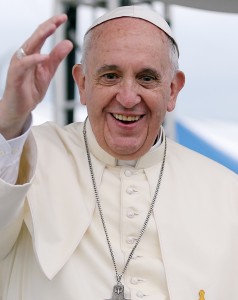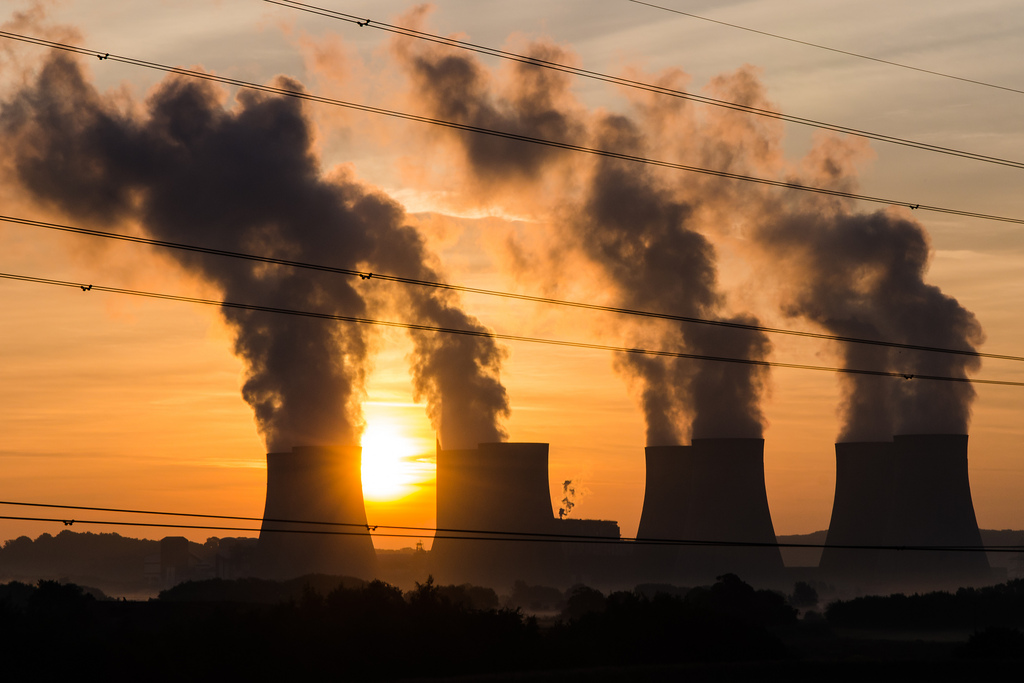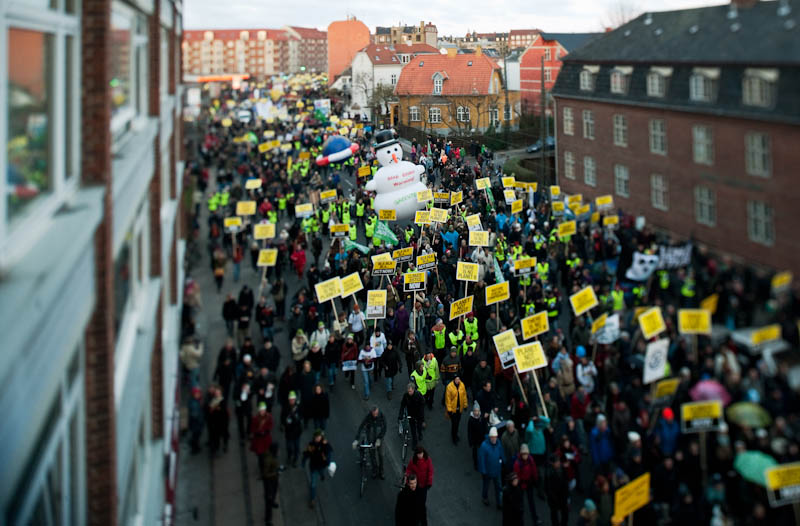By Michael Greenberg, Sabin Center Summer Intern
 Pope Francis’ June 18 encyclical Laudato Si’, On Care for Our Common Home includes a section about the economics of carbon mitigation. Although a small part of the encyclical—one paragraph out of 246—the pope’s economic prescription received extensive coverage from top newspapers such as the Washington Post and New York Times. Many of the academics and pundits writing about this part of the encyclical (paragraph 171) concluded that Francis opposes using cap-and-trade schemes as a means for addressing climate change. This blog post will question whether this section of Francis’ encyclical has been interpreted in the correct manner.
Pope Francis’ June 18 encyclical Laudato Si’, On Care for Our Common Home includes a section about the economics of carbon mitigation. Although a small part of the encyclical—one paragraph out of 246—the pope’s economic prescription received extensive coverage from top newspapers such as the Washington Post and New York Times. Many of the academics and pundits writing about this part of the encyclical (paragraph 171) concluded that Francis opposes using cap-and-trade schemes as a means for addressing climate change. This blog post will question whether this section of Francis’ encyclical has been interpreted in the correct manner.
In Paragraph 171 Francis writes: “The strategy of buying and selling ‘carbon credits’ can lead to a new form of speculation which would not help reduce the emission of polluting gases worldwide. This system seems to provide a quick and easy solution under the guise of a certain commitment to the environment, but in no way does it allow for the radical change which present circumstances require. Rather, it may simply become a ploy which permits maintaining the excessive consumption of some countries and sectors.”
This paragraph was widely interpreted as a criticism of cap-and trade. New York Times columnist David Brooks, in his June 23 Column Fracking and the Franciscans writes: “[Francis] specifically condemns market-based mechanisms to solve environmental problems, even though these cap-and-trade programs are up and running in places like California.”
Christiana Peppard, an assistant professor at Fordham University, wrote a June 18 column in the Washington Post, What you need to know about Pope Francis’s environmental encyclical, which also described the Pope’s position as opposing cap-and trade. Peppard writes: “Francis is wary of cap-and-trade or carbon-pricing proposals that would merely maintain the underlying systems of environmental exploitation, without the ‘radical change which present circumstances require’ (171).”
Stephen Stromberg, an editorial writer for the Washington Post, makes a similar point. In his June 18 column What Pope Francis Gets Wrong about Climate Change he cites paragraph 171, writing: “The ‘carbon credits’ strategy Francis refers to, more commonly called ‘cap and trade,’ would put a price on emitting carbon dioxide, essentially building the social costs of pollution into the sticker price of goods and services.”
Coral Davenport, in a June 18 article Championing Environment, Francis Takes Aim at Global Capitalism, quotes the environmental economist Robert Stavins who, while pleased with the pope’s overall message, was unhappy with his economic approach. “‘I respect what the pope says about the need for action,’” Stavins said in an email to Davenport, “‘but this is out of step with the thinking and the work of informed policy analysts around the world, who recognize that we can do more, faster, and better with the use of market-based policy instruments — carbon taxes and/or cap-and-trade systems.’” Davenport also gave credit to the idea that the pope was against cap-and-trade by noting that “Francis’ critique…could hinder the efforts to expand cap-and-trade measures.”
However, it is possible that Francis did not intend to wage a full-on assault of cap-and-trade. In fact, it is possible that Francis is not opposed to cap-and-trade at all. Francis discussed “the strategy of buying and selling ‘carbon credits,’” but he never mentions cap-and-trade. Thus, it is possible that Francis is against carbon offsets rather than against cap-and-trade.
Carbon offsets allow a party to pay someone else to reduce emissions, rather than to reduce its own. An example of offsetting carbon emissions is emitting carbon but then paying another party to plant trees to offset the original impact. Cap-and-trade is in some ways similar to carbon offsets, but the two are certainly not identical. A conventional cap-and-trade system involves the government deciding how much carbon can be emitted each year, and then distributing licenses to pollute at a rate consistent with the government’s emissions target. These licenses can be distributed via auction, a government decision about how many credits each industry deserves, or some combination thereof. Under a cap-and-trade scheme, when a party pollutes less than its allowances permit, it may sell its extra credits, and when a party pollutes more, it must acquire additional allowances, for example by purchasing extra permits from a company that has polluted less. It is possible that Francis came out against carbon offsets without coming out against cap-and-trade. For instance, he may support a cap-and-trade system in which it is not permissible to “outsource” emissions reductions. Under such a system, a company that pollutes more than its allowances would have to buy credits from a company that has under-polluted, and would not be able to explore the option of, say, paying for a forest to be planted to account for its over-pollution. Francis did not mention cap-and-trade by name a single time in the encyclical, and paragraph 171 is ambiguous as to Francis’s views on the subject.
Indeed, despite the ambiguity in Francis’ language regarding whether he is referring to carbon offsets or to cap-and-trade, the more likely and reasonable conclusion is that he was referring to carbon offsets. The reason is as follows: mainstream environmental thought is much more skeptical of carbon offsets than of cap-and-trade; the pope’s encyclical was overall aligned with the environmental mainstream; thus, all else equal, a “best guess” working hypothesis would be that the pope was in fact referring to carbon offsets.
Moreover, skepticism of carbon offsets need not reflect a deep ideology about the inability of market mechanisms to address pressing social issues. Rather, such a position can stem from practical considerations. One common concern with offsets is that difficulties often arise in verifying whether the offset project was indeed carried out. Another difficulty stemming from offsets is discerning whether projects that get built for the stated purposes of offsetting carbon would have been built anyway. In contrast, fewer practical issues arise in the context of cap-and-trade policy implementation.
Many pundits readily concluded from the encyclical that Francis opposes cap-and-trade. Yet in the entire document, this policy was not mentioned even once. Moreover, the part of the encyclical these columnists refer to could easily be interpreted otherwise, allowing for the alternative conclusion that Francis merely opposes carbon offsets. Although it is indeed hypothetically possible Francis opposes cap-and-trade, he did not actually express such opposition in the encyclical.




